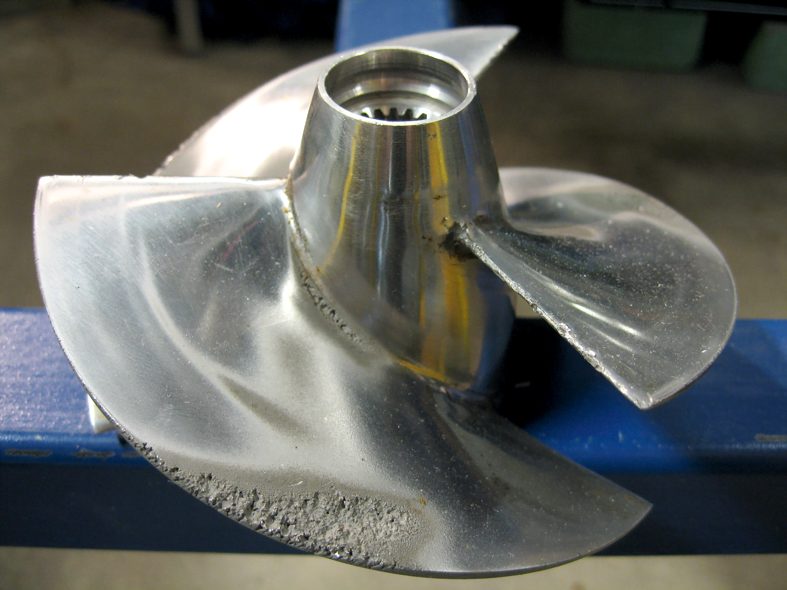Let's start off with a fundamental question: Where does the steam come from?
To get steam, water has to boil, right? And if water boils at 100 °C, how does steam form in water that is well under 100 °C?
The answer to that question is that water boils at 100 °C at sea level, where the static pressure is one atmosphere, which is about 101 kilopascals (kPa). If the pressure of the liquid increased, for example, to 200 kPa, the boiling point increases to around 120 °C.
Likewise, if the pressure is reduced, the boiling point is reduced. So if the pressure drops to around 1.2 kPa, the boiling point will drop to about 10 °C.
STEAM BUBBLES IMPLODING?
Along with noise, when a steam bubble implodes from increased vapor pressure, cavitation creates a micro-jet that, over time, can result in considerable damage to materials in the immediate vicinity.
Propeller Cavitation and Pressure Change
As propeller blades turn, pressure discrepancies occur. On the side of the blade that pushes against the water, pressure is increased causing liquid flows.
But on the other side of the blade the pressure drops, and the faster the blade turns, the lower the pressure drops and liquid flow velocity increases. If the pressure drops enough, the water in that area boils.
Cavitation Noise and Bubbles
The low-pressure zone is localized around the propeller, so when the bubbles leave that area they return to the normal pressure for whatever depth they are. This causes them to rapidly revert from gas bubbles to liquid, and because the gas takes up more space than the liquid, the bubbles implode, which
creates a great deal of noise.
LEARN MORE
National Geographic
"Cavitation Explained!"

Abonnieren Sie unseren Newsletter zum Thema Schall und Schwingung


